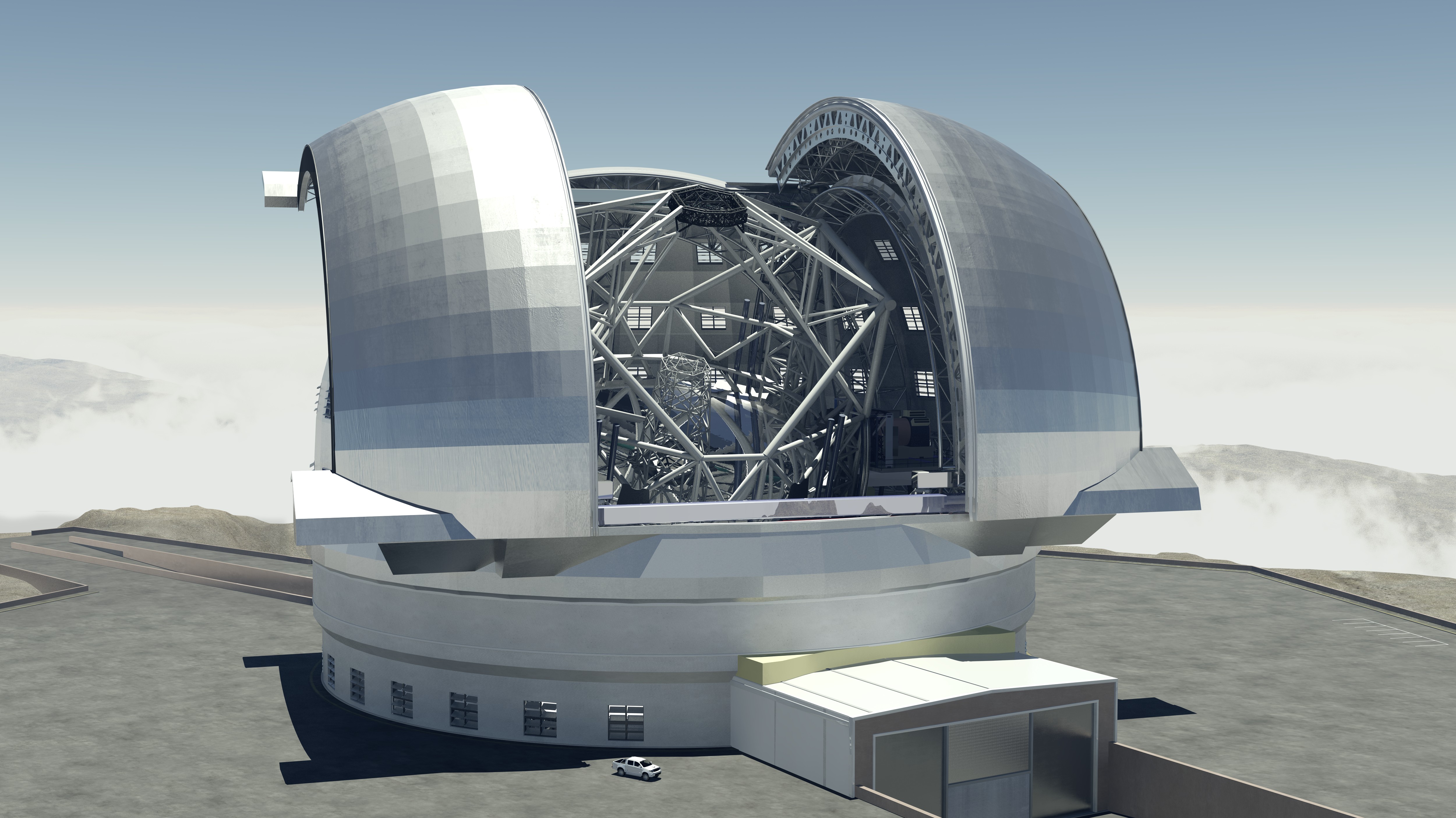Philippe Feautrier, Gael Chauvin, Sylvain Douté, Estelle Moraux et l’équipe MAORY à l’IPAG.
Présenté par : Philippe Feautrier et Sylvain Douté (IPAG)
MAORY (Multi-conjugate Adaptive Optics RelaY) est le système d'optique adaptative multi-conjugué (MCAO) du futur télescope géant européen, l'ELT. Le contrat de cet instrument a été signé avec l'ESO en Décembre 2015. L’IPAG est responsable de la fourniture du sous-système "Laser Guide Star Wavefront Sensor" (LGS). Grâce à son investissement instrumental, l'IPAG disposera de 11 …
Philippe Feautrier, Gael Chauvin, Sylvain Douté, Estelle Moraux et l’équipe MAORY à l’IPAG.
Présenté par : Philippe Feautrier et Sylvain Douté (IPAG)
MAORY (Multi-conjugate Adaptive Optics RelaY) est le système d'optique adaptative multi-conjugué (MCAO) du futur télescope géant européen, l'ELT. Le contrat de cet instrument a été signé avec l'ESO en Décembre 2015. L’IPAG est responsable de la fourniture du sous-système "Laser Guide Star Wavefront Sensor" (LGS). Grâce à son investissement instrumental, l'IPAG disposera de 11 nuits de temps garanti sur un total de 65 nuits sur MAORY/MICADO. L'accord pour l'instrument MAORY a été signé le 10 Décembre 2015 entre l’ESO et un consortium d'instituts européens composé de l’Istituto Nazionale di Astrofisica (Italie) et de l’Institut National des Sciences de l’Univers du Centre National de la Recherche Scientifique (France). Couplé à l'optique adaptative multi-conjuguée MAORY, l'imageur proche infrarouge MICADO permettra d'exploiter pleinement la résolution d'un télescope de 39 m sur 50% du ciel et permet l'accès à de larges programmes scientifiques qui complètent les programmes spatiaux comme le James Webb Space Telescope par un accès à une résolution angulaire et une sensibilité meilleure.
La présentation débutera par un volet instrumental. Le projet MAORY a subi une profonde refonte dans les 2 années précédentes, avec notamment une nouvelle équipe mise en place par l'INAF en Italie et des nouvelles spécifications. La MCAO est un système d'optique adaptative à plusieurs étoiles laser et plusieurs miroirs déformables (DM) optiquement conjugués à différentes altitudes. La MCAO avec LGS (Laser Guide Star) ne permet pas de mesurer le tilt du front d'onde et plusieurs modes sont non corrigés par les étoiles laser, d'où la nécessité des étoiles lasers naturelles (visibles et/ou infrarouges) pour corriger ces modes, ce qui explique qu'un système de MCAO peut ne pas avoir une couverture de ciel de 100 % puisqu'on a encore besoin d'étoiles naturelles dans le champ. On admet généralement que les ELT sont peu attractifs sans MCAO de par leur couverture de ciel trop faible, et c'est pourquoi malgré son extrême complexité, l’instrument MAORY figure en phase 1 de l'ELT. Aujourd'hui, MAORY comprends 2 DM, 6 étoiles laser (LGS-Laser Guide Star) et ses 6 analyseurs, 3 étoiles naturelles (senseur de tilt) avec 3 analyseurs visibles et 3 analyseurs infrarouges. Dans ce système, l'IPAG est responsable du sous-système LGS qui comprend les 6 analyseurs de surface d'onde, situés sur une galette de 1 m de diamètre (700 kg) qui tourne avec le champ du télescope. MAORY vient aujourd'hui de livrer sa documentation de PDR (Preliminary Design Review) en 2 parties. La fin de ce processus aura lieu en Juin 2021 avant de commencer une phase dite de FDR (la Final Design Review) qui devrait se prolonger jusqu'en 2023. L'IPAG livrera son sous-système LGS à Bologne (intégration et tests) en 2026 puis l'instrument sera réinstallé au Chili à Armazones sur le site de l'ELT en 2028 pour la phase dite de commisionning.
Le second volet de l’exposé détaillera les cas scientifiques de l’instrument. Il y a un travail en cours par l'équipe scientifique de MAORY pour définir les cas prioritaires qui seront abordés par MICADO/MAORY dans différents thèmes : amas d'étoiles en formation, amas stellaires des centres galactiques, évolution et dynamique des galaxies, sursauts gamma, disques protoplanétaires, exoplanètes et objets du système solaire. Nous insisterons particulièrement sur les thèmes scientifiques poursuivis à l’IPAG. En ce qui concerne l’imagerie d’exoplanètes et de disques circumstellaires, comprendre comment les planètes se forment et évoluent, quelle est leur structure interne et celle de leur atmosphère, représente l'un des défis majeurs de l'astronomie moderne. L’exploitation du mode haut contraste de MAORY-MICADO ciblera des objets jeunes, enfouis dans leur disque. L’étude de la formation et de l'évolution des petits corps distants du Système Solaire (astéroïdes, objets transneptuniens – KBO - et Centaures) bénéficiera également du système MCAO qui devrait offrir une vision affinée (taille, forme, couleurs, composition chimique et densité) de ces objets grâce à la résolution angulaire et la sensibilité inédites des images produites. Celles-ci seront en effet corrigées uniformément des effets de la turbulence atmosphérique par une optique adaptative MCAO qui, contrairement à un mode SCAO, fonctionne sur une large portion du ciel indépendamment de la magnitude apparente et du mouvement propre de la cible. La formation et l'évolution des amas globulaires (GC), des jeunes amas massifs et des régions de formation d'étoiles, qu’ils appartiennent à notre galaxie ou à ses voisines, est un objectif d'une importance capitale pour MICADO-MAORY. En effet, la MCAO donne tout son potentiel pour l’observation de tels champs à haute densité d'étoiles car il offre l'avantage d'un large champ de vision avec une PSF uniforme. Le résultat est un gain de sensibilité pour les sources ponctuelles, une minimisation de la confusion de la population stellaire, une photométrie plus complète et plus stable ainsi que la possibilité de mesurer simultanément le mouvement propre de nombreuses étoiles individuelles améliorant les statistiques.




